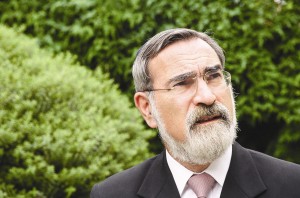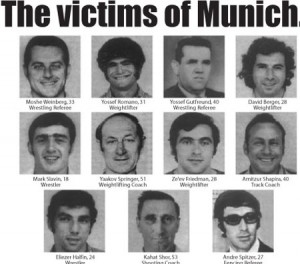
With its hippie allure, Deadenim looks like it belongs in San Francisco’s Haight-Ashbury neighborhood of the 1960s.
A small shop recently added to the row of fashion stores at the top of Geula Street in Tel Aviv might at first glance look more like a project by an art school graduate than a regular boutique. The timing of the graduates’ exhibitions arouses this suspicion, of course, but also something in the orderly rows of jeans that have been cut off wildly, as seen through the glass facade, sharpens this sense. It is hard to believe that anyone would conceive of devoting a store to this specific fashionable item. And perhaps in fact it is the stylized presentation of the clothing displayed in the small show window and glass door beside it, which is locked most of the time, that bring to mind the mock-up of a Prada boutique built by a pair of Scandinavian artists, Michael Elmgreen and Ingar Dragset, in the Texas desert.
“Lots of people complain that the store isn’t open when they walk down the street,” says Tomer Glerenter, owner of Deadenim. “That’s strange, because it’s open every day between noon and seven.”
Glerenter, 28, launched the boutique about a month and a half ago after focusing his activity for the past two and a half years on websites like Etsy, Abie and recently also the online store Marmalada. The long activity on the Internet can perhaps explain the somewhat practical look of the real boutique, in which old wooden crates serve as storage and seating, and old iron water pipes painted red have become a stand for hanging clothes and a shelf for art and design books.
He says he honestly had never thought of opening a store. For years he lived and worked in a loft apartment in south Tel Aviv, where he kept his stock of jeans (which now number about 2,000 pairs ), a sewing machine and other equipment, and from there the shipments would leave for abroad.
About two months ago, as he was walking down the street he saw the small space that was serving as a kind of office for an antique dealer, and suddenly the desire arose in him.
“On the Internet I sell only to clients abroad, even when those sites operate in Israel as well,” he says, so Deadenim is an opportunity to get into the local market. He says it has also provided him with a good opportunity to expand the offering of styles he designs, integrating into them studs in various configurations, or embroidered fabrics or experimenting with non-uniform dying of buttoned woven cloth shirts.
Alongside these is a display of vintage leather bags Glerenter has collected in Israel and abroad, among them a shirt with a large Adidas logo on the front of the bag and a small leather bag by Salvatore Ferragamo. Despite the familiar brand names, he says he puts the emphasis on the age of the items more than on their logos. He attributes the fact that most of the jeans in the store bear a Levi’s label to the quality of the veteran denim brand.
“Jeans are judged above all by the way they fit on the body, but beyond that there is the quality of the cloth, the sewing and the small details. Because I have been dealing with this for a long time I can identify the differences in the sewing – a single seam or a double seam, threads in two colors rather than one, and also the type of belt loops or the studs reinforcing the various parts.”
A fashion autodidact
Among the styles now on display in the shop are dark denim shorts on which an acid imprint of Glerenter’s hand is located under the back pocket. On another style he has added colorful ethnic embroidery to the side of the pocket. “This is a piece of an embroidery I found. There is something Mexican or Indian about it and for some reason this is terribly fashionable now,” he says.
It is impossible not to smile at this declaration, which is made in a quizzical tone. Hard, too, not to be amused by another pair of shorts, one side of which is covered in black cloth embroidered in a similar primitive style (also on the back pocket ), or by yet another pair on which one leg is covered in cloth with a kitschy tropical print of a blue sea, tall palm trees and a large orange sun. The sewing is not very precise but in this case that fits in as part of the rough language of the styles.
“I didn’t study fashion design but I am aware of what is happening in fashion, and from time to time I have a look at street fashion blogs,” he says.
It turns out this is enough to give relevance to products like tailored woven shirts in classical cuts and dyed in optimistic shades like pistachio or purple, or from white to blue, or non-uniform dying that slips from light blue to pale pink in airy splotches or pale shades of purple or yellow.
The dying process is accomplished by a method of trial and error and therefore, says Glerenter says, he can’t commit himself on the appearance of the final product. “This depends on many factors like the kind of fabric or the dye and therefore I don’t always have complete control of this process.”
This also applies to the jeans shorts he dyes. One pair in black has been mottled with acid in a marble pattern while other pairs have been dyed entirely in two shades, these too in cheery combinations of purple and yellow or peach and pale blue.
On the whole, the store has a certain hippie look about it. The clothes are dyed in a non-uniform way, the edges are unraveled and the immediacy of the styles that have been roughly cut bring to mind a wardrobe that could have been sold in a similar shop in the Haight-Ashbury neighborhood of San Francisco in the 1960s. The view down the street – the road leading to the beach and the strip of blue sea framed between the buildings – of course increase this impression. “There is a general feeling in fashion of bohemian chic, which is something between hippie and urban,” he says. “I don’t know,” he adds, dismissing what he has just finished saying with a wave of his hand. “I try not to be too guided by trends but I do relate to things I see and absorb.”
The contrast between Glerenter’s claimed distance from fashion and the so very contemporary colors of the items he shows in the store is surprising. Upon close scrutiny, Deadenim looks like it has been designed by a typical Tel Aviv hipster, a woman involved in one sort of creative work or another, someone who frequents the fashionable cafe across the street and documents its regulars in the blog she writes.
However, it takes only one look at its owner to understand how far he is from this model. Dressed in a white T-shirt and long jeans (“By chance you’ve caught me without shorts today. I’ve simply decided to vary a bit” ), he does not conform to the above characterization.
Nor does it seem that Glerenter himself wears the clothes he redesigns. “The truth is that I have a vest with studs that I’ve just made, which I could take, but in general that’s right – my style is pretty solid.”
And when you think about it, the wardrobe he offers is based on two basic items of clothing, such as jeans and buttoned fabric shirts, but Gelrenter puts them through assorted adaptations that give them a new, varied life.
Apparently it is not by chance that he chose to call his brand Deadenim (dead denim ). In a sense it constitutes a kind of revitalization institute for jeans items that have vanished from this world. But this too has a simpler explanation: “I was looking for a name that would best describe the ideas of vintage and jeans and that’s what turned up.”
Deadenim, 49 Geula Street, Tel Aviv. Prices: Pants, NIS 150-888; T-shirts, NIS 80-100; buttoned woven cloth shirts, NIS 350-650; leather bags, NIS 200-800. Open 12:00 noon to 7 P.M.



















